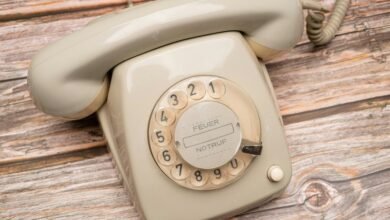Cross-Check Caller Identity Using 3497237224, 3807480513, 3533635293, 3505517460, 3533396211, 3511577632

In today’s digital age, verifying caller identity has become increasingly important to protect against scams and fraud. The phone numbers 3497237224, 3807480513, 3533635293, 3505517460, 3533396211, and 3511577632 exemplify the need for vigilance. By utilizing caller ID databases and analyzing call patterns, one can assess the legitimacy of these numbers. A closer examination of associated reports may reveal critical insights into potential risks. What might these findings indicate about the broader landscape of communication security?
Understanding the Importance of Caller Verification
Although the rise of technology has facilitated communication, the need for caller verification has become increasingly critical.
Caller safety hinges on effective verification methods that protect individuals from scams and identity theft. As digital interactions grow, understanding the importance of confirming caller identities becomes paramount.
Employing robust verification strategies not only enhances security but also empowers users to engage freely and confidently in their communications.
Tools for Cross-Checking Caller Identity
Numerous tools are available for cross-checking caller identity, each designed to enhance verification processes and mitigate risks associated with fraudulent communications.
These verification tools utilize caller ID databases to confirm the authenticity of incoming numbers. By implementing such resources, individuals and organizations can significantly reduce the likelihood of falling victim to scams, ensuring a more secure communication environment.
Analyzing the Specific Phone Numbers
When analyzing specific phone numbers, it is essential to consider various factors that contribute to their legitimacy and potential risk.
Phone number analysis involves investigating call patterns, geographic origins, and associated reports. Caller ID verification can help identify potential scams or telemarketers.
Best Practices for Handling Unknown Calls
Handling unknown calls requires a strategic approach to ensure safety and minimize potential risks.
Implementing unknown caller protocols is essential; individuals should refrain from sharing personal information until the caller’s identity is verified.
Effective verification methods include calling back using a known number or utilizing caller ID services.
Adopting these practices enhances personal security and empowers individuals to manage unsolicited communications effectively.
Conclusion
In a world where communication can sometimes resemble a masquerade, vigilance in caller identity verification remains paramount. By employing robust tools and methodologies, individuals can gracefully navigate the intricacies of unsolicited calls. Understanding the nuances of specific phone numbers fosters a sense of security and empowerment. Ultimately, adopting prudent practices when engaging with unknown callers not only safeguards personal information but also cultivates a more serene communication landscape, free from the shadows of potential deception.





